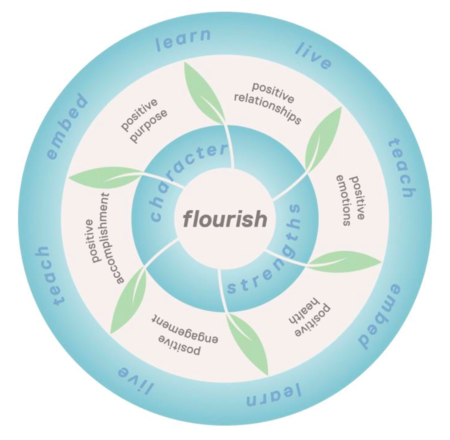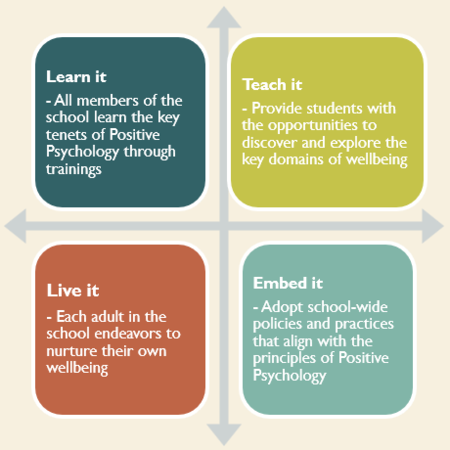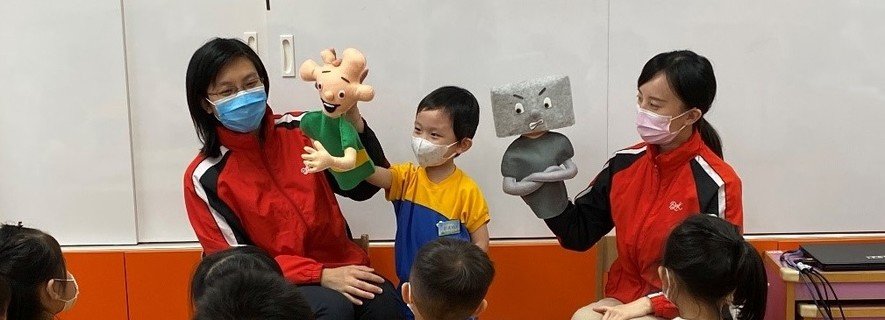What is
What is Positive Education?
According to Dr. Martin Seligman and his colleagues (2009), the goals of Positive Education are to cultivate the traits of character strength, resilience and happiness of all stakeholders at schools. Geelong Grammer School (GGS) referred to the PERMA model from Dr Martin Seligman when they developed the framework to implement whole-school appoach Positive Education. The GGS framework added the topic of Positive Health to form 6 main themes of Positive Education, including Positive Emotion, Positive Relationship, Positive Purpose, Positive Accomplishment, Positive Engagement and Positive Health (Hoare et al., 2017).

Fig 1. Positive Education Model in GGS
The framework aimed to help every stakeholder at school to build a flourish life. The inner blue circle is about character strengths, indicating the positive qualities that everyone possesses (See Fig. 1). A flourish life can be achieved when these strengths and virtues are fully developed and used. These themes are implemented through 'learn', 'live', 'teach' and 'embed' as shown in the outer blue circle. Our project focuses on the topics of Positive Accomplishment, Character Strengths, Positive Emotion, Positive Health, Positive Relationship and Positive Purpose. For Positive Accomplishment, the topic of Growth Mindset was selected.

Fig 2. The Framework of Positive Education
Positive Education has been implemented to the school setting through 'learn', 'live', 'teach' and 'embed' systematically (Fig. 2). In each topic, trainings were provided to teachers, non-teaching staff and parents by educational psychologists. The attendants were encouraged to 'live' out Positive Psychology in daily life after they 'learn' it. It helped enhace their own happiness and set a good role model for the students. After the trainings, the Positive Education team regularly held meetings with the teachers to guide them on 'teaching' Positive Education to students directly through storybooks and indirectly through classroom routines and languages. The role of educational psychologists changed from providing trainings to consultation gradually. They served to enhance the school-based curriculum and activities with Positive Education elements, as well as, to review the school policies in order to 'embed' Positive Education to all levels of the school setting.
1. Seligman, M. E., Ernst, R. M., Gillham, J., Reivich, K., & Linkins, M. (2009). Positive education: Positive psychology and classroom interventions. Oxford review of education, 35(3), 293-311.
2. Hoare, E., Bott, D., & Robinson, J. (2017). Learn it, Live it, Teach it, Embed it: Implementing a whole school approach to foster positive mental health and wellbeing through Positive Education. International Journal of Wellbeing, 7(3).

